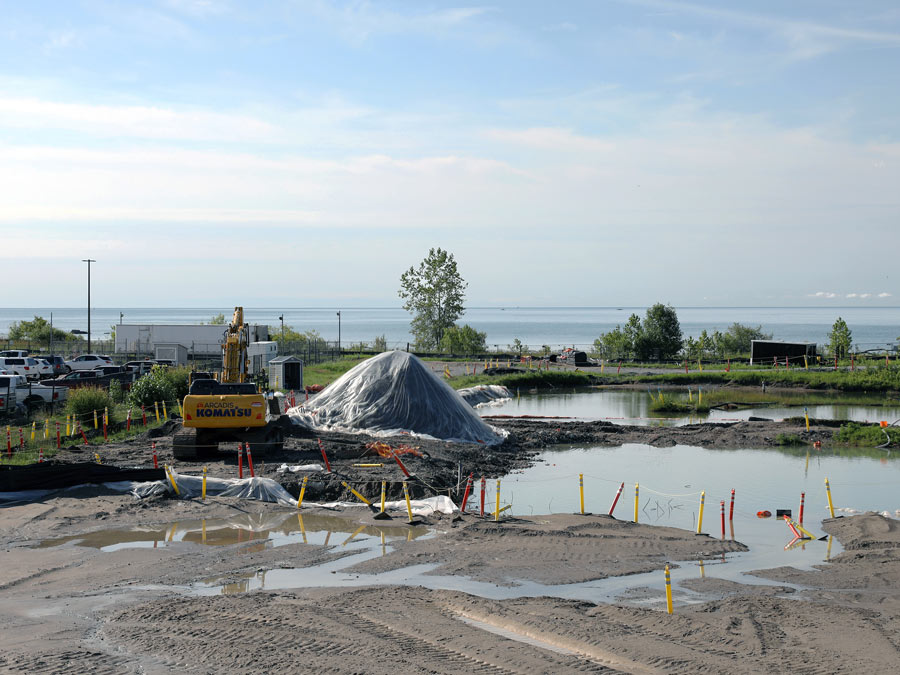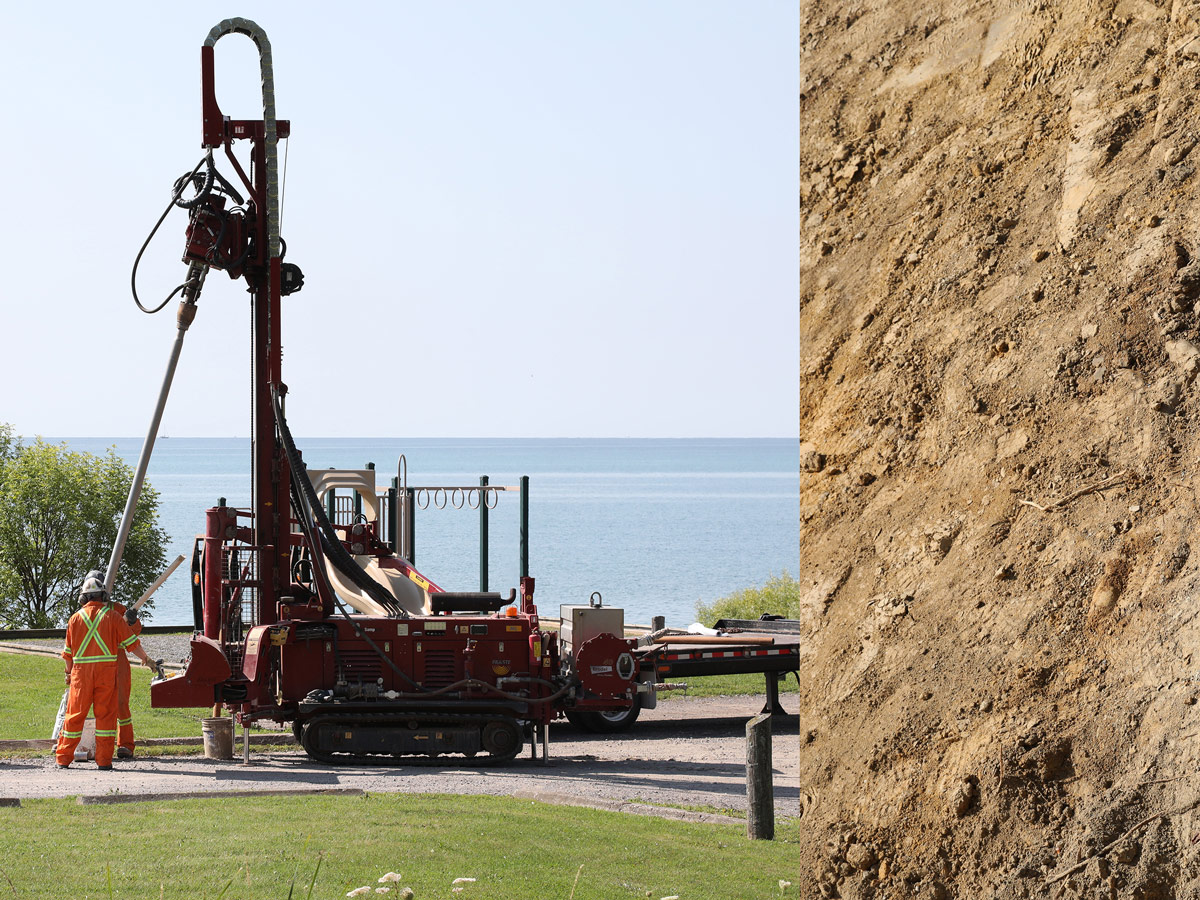People, planet, prosperity: Working together towards a sustainable future
Innovation Issue 35: Fall 2021
Chronicling an era of nuclear waste in Port Hope

Chronicling an era of nuclear waste in Port Hope
At the north end of Port Hope, Ontario, located at the mouth of the Ganaraska River on the north shore of Lake Ontario, a vast mound – designed to eventually be seven storeys tall with an area footprint of roughly 70 hockey rinks – is being constructed and filled with radioactive soil that is contaminated with radium-226, uranium, thorium-230 and arsenic.
Image arts professor Blake Fitzpatrick has dubbed it the “Future Mound.” This $1.28 billion project is the most expensive municipal cleanup operation in Canadian history, and is the subject of professor Fitzpatrick’s ongoing documentary project, including images, video, writing and interviews.
The town’s nuclear history and connection to significant world events, along with the challenge of trying to capture the “invisible,” is what initially drew professor Fitzpatrick to turn his lens on Port Hope over the last three decades. In the 1990s and early 2000s, for a project about the contamination, he documented the location of the waste, as well as the impacted homes and unique stories. In 2014, he returned to begin what’s now the Future Mound project, which follows the cleanup efforts. Radioactive contamination had spread throughout the town in large part due to the use of waste from processing, known as tailings, as construction fill for building projects.
An estimated 75,000 truckloads of contaminated soil – about 1.2 million cubic metres – are being excavated from around Port Hope, including from people’s yards. Here, radium and uranium processing stretches back to the 1930s, and in the 1940s the town’s plant refined uranium oxide for the Manhattan Project, which created the atomic bombs that resulted in the destruction of Hiroshima and Nagasaki during the Second World War. Today, the plant is still in operation. Previously owned at different times by the Canadian federal government and private sector businesses, it is once again owned privately and is the only uranium conversion facility in Canada. The cleanup and the sealing of the mound is slated to happen in 2024-2025, with ongoing monitoring and maintenance to continue afterwards.
The mound will be visible from Highway 401 and is designed to seal the contaminated soil for 500 years – though it may last longer, or there may be a new storage solution by then. Professor Fitzpatrick points out that this is nowhere near the amount of time it will take for the interred radium-226 to lose half of its radioactivity. Radium-226 has a half-life of 1,600 years.
“These are long-term problems, long-term contaminants, with almost inconceivable time spans. The mound raises troubling environmental and conceptual questions, such as how does one build a mound to hold contaminated materials that are going to last longer than any of us and subsequent generations?” said professor Fitzpatrick. The mound and cleanup project raises questions about the sustainability of nuclear waste storage.

His documentary efforts in Port Hope have focused on the contaminated soil and the changes occurring as large swaths of the town’s landscape are scooped up for burial in the mound. “In a way that sounds kind of boring, it has to do with soil, dirt, that’s what it looks like, but it’s also about the idea that an entire landscape is being displaced,” said professor Fitzpatrick. “A lot of this is happening in people’s backyards. On one level you look at Port Hope and it looks like a picturesque, beautiful, small Ontario town, but just below the surface there are contaminated materials that will remain with us for eons, and that’s what I’m really interested in, is seeing the extraordinary in the ordinary.”
His work has been featured in The Creative School’s annual RUBIX exhibition, on his personal website and in a co-authored essay chapter that appeared in the book, Through Post-Atomic Eyes, published in fall 2020. For the book chapter, he and photographer Robert del Tredici, the founder of the Atomic Photographers Guild, collaborated on an essay about Port Hope and nuclear waste, and each contributed their own images. The duo has worked together on previous projects, and professor Fitzpatrick is a member of the Atomic Photographers Guild (external link) , which documents the history and ongoing legacy of the atomic age.
He plans to continue documenting the cleanup in Port Hope, noting it is part of an ongoing story of the town’s history with nuclear materials, a connection that will continue far into the future. “This is Canada’s nuclear town, now and forever,” he said.
Learn more about professor Fitzpatrick and his work in this YouTube video. (external link)

The mound raises troubling environmental and conceptual questions, such as how does one build a mound to hold contaminated materials that are going to last longer than any of us and subsequent generations?

Part of this project is supported by the Ryerson Creative Fund.
